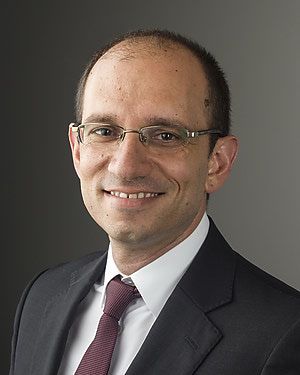Article
History of TIA Associated with 4-fold Increase in Stroke Risk, Study Finds
Author(s):
An analysis of more than 14k patients from the Framingham Heart Study provides clinicians with an overview of trends in stroke risk among patients with and without a history of TIA dating back to the 1950s.
Vasileios-Arsenios Lioutas, MD

New research from Beth Israel Deaconess Medical Center and Harvard Medical School-led team is detailing the progress made in stroke prevention among patients with a history of transient ischemic attack (TIA).
The study, which included 14k patients and more than 600,000 person-years of follow-up, found the rate of stroke after TIA has declined over time, but investigators warn these patients were still at an increased risk and should be monitored closely.
"According to our findings, people continue to have a high risk of stroke for a sustained time after they've had a TIA," said Vasileios-Arsenios Lioutas, MD, a neurologist at Beth Israel Deaconess Medical Center and Harvard Medical School, in a statement. "Therefore, one shouldn't think that the high-risk period is just in the first 90 days after the attack and then one can relax. It seems these patients should be followed closely over time, keeping in mind that they are at risk for stroke and paying close attention to controlling their cardiovascular risk factors."
To learn more about the risk of subsequent stroke after TIA and long-term trends of incidence, Lioutas and a team of colleagues designed the current analysis as a retrospective cohort study of patients from the Framingham Heart Study. Dating back to 1948, using the Framingham Heart Study provided investigators with information related to cohorts of 4000 individuals or more created in 1948, 1971, and 2002.
From the study, investigators identified 14,059 individuals with no history of TIA or stroke at baseline. Investigators also identified a cohort of 2175 patients who suffered a stroke during follow-up but did not experience TIA.
The primary outcome measurements of the study were TIA incidence rates, proportion of stroke occurring after TIA within 7, 30, or 90 days versus those occurring 1-10 years after TIA, stroke after TIA versus stroke among the matched cohort without TIA, and time trends of stroke at 90 days after TIA from 1954-1985, 1986-1999, and 2000-2017. For the purpose of analysis, calendar time and incidence of TIA were used as exposures in the study.
The 14,059-patient cohort identified for inclusion provided investigators with 366,209 person-years of follow-up data. During the follow-up period, 435 patients experienced a TIA. Of the 435 who experienced a TIA, 229 were women with a mean age of 73.47 (SD, 11.48) years and 206 men with a mean age of 70.10 (SD, 10.64) years. The estimated incidence rate of TIA during the entire study period was 1.19 per 1000 person-years.
When assessing patients with a TIA, 130 (29.5%) had a stroke during the follow-up period, which lasted a median of 8.86 years. Of the 130 strokes that occurred, 28 (21.5%) occurred within 7 days, 40 (30.8%) occurred within 30 days, 51 (39.2%) occurred within 90 days, and 63 (48.5%) occurred more than 1 year after the index TIA event. The median time to stroke after TIA was 1.64 (IQR, 0.07-6.6) years.
In age- and sex-adjusted analyses, investigators determined the cumulative 10-year hazard of stroke among patients with TIA was 0.46 (95% CI, 0.39-0.55) and 0.09 (95% CI, 0.08-0.11) among the matched cohorts without TIA. When comparing the hazard between the study arms, the fully adjusted hazard for those with a TIA was 4.37 (95% CI, 3.30-5.71; P <.001).
Analyses assessing changes over time found the 90-day stroke risk from 1948-1985 among those with TIA was 16.7%, risk from 1986-1999 was 11.1%, and risk from 2000-2017 was 5.9%. When compared to risk from 1945-1985, patients with TIA from 1986-1999 was 0.60 (95% CI, 0.33-1.12) and 0.32 (95% CI, 0.14-0.75) among patients with TIA from 2000-2017 (P=.005 for trend).
"We examined 66 years of follow-up from Framingham participants, which allowed us to study trends over time. We can see that starting in the very early years of the Framingham study, the 1950s, moving on to the most recent times, the risk of subsequent stroke went down a lot,” said Sudha Seshadri, MD, professor of neurology at The University of Texas Health Science Center at San Antonio and senior investigator of the Framingham Heart Study.
This study, “Incidence of Transient Ischemic Attack and Association With Long-term Risk of Stroke,” was published in JAMA.





